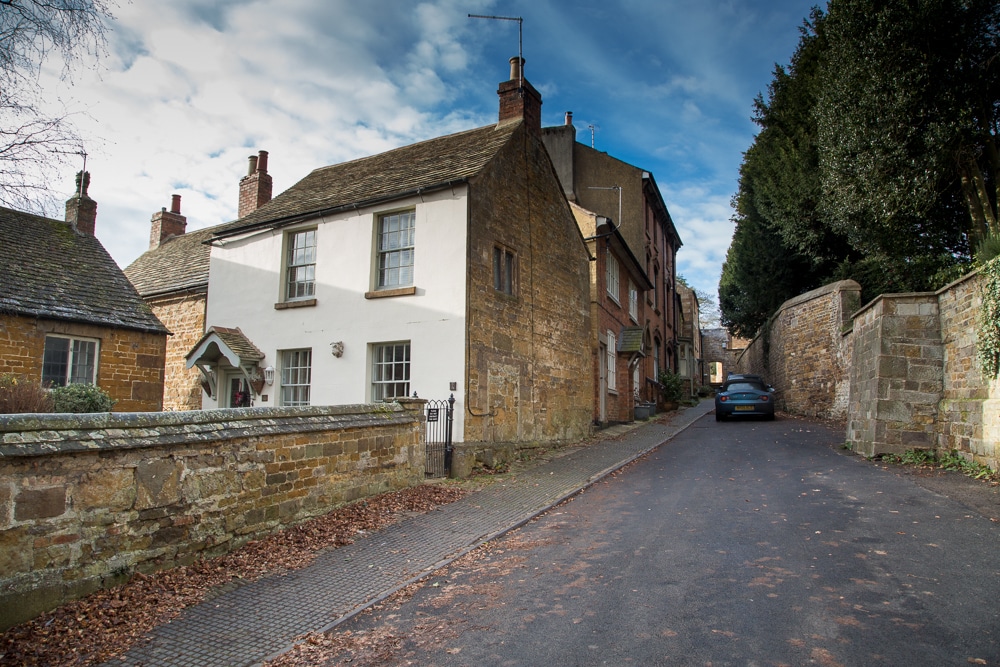
Leamington Terrace
Professor Alan Rogers suggests that rather similar to some modern town planning, the lord of the Manor, in about 1200, laid out Uppingham as a planned town. There was a market place and plots of tenants bounded by the east by Queen Street, to the west by School Lane, and to the South by a connecting through way that runs through Leamington terrace below the old rectory walls and continues east through the Church Yard and the top of Beast Hill.
Leamington terrace was originally called ‘Wash Pond Lane’ as the pond used to clean carts and for watering horses lay at its junction with London Road in the garden of what is now 2 Leamington Terrace. The pond was rarely cleaned , and became a health hazard , compounded by complaints made in 1819 to the Rectory Manor Court that dead animals were thrown in the pond and left to decay. We can add to the misery of this story by noting that immediately south of the pond was an inn called the ‘Chequers Inn’, and in 1802 the landlady, Mary Ironman, was in serious trouble for tapping into the pond to supply water for the inn!
This through way linked the ‘Free School’ in the church yard (site 6) to the original ‘hospital’ or lodgings now where Uppingham School is situated, so this was once bustling with the residents of the terrace and school boys rushing to get to the school. Much later in the C19 the school erected railings at the bottom of the steps leading to the church yard to prevent boys late for classes dashing under the wheels of passing traffic!
The residents of this little street are well documented in the census for 1851 which notes that a total of 17 adults and 9 children lived on the terrace. Many were tradesmen ‘working from home’ (how modern!) including a cobbler, a whitesmith (tinsmith), and a tailor. Two elderly ladies were described as ‘paupers’, as was another bereaved lady, Mary Simms, who was living there with her 5 children.





